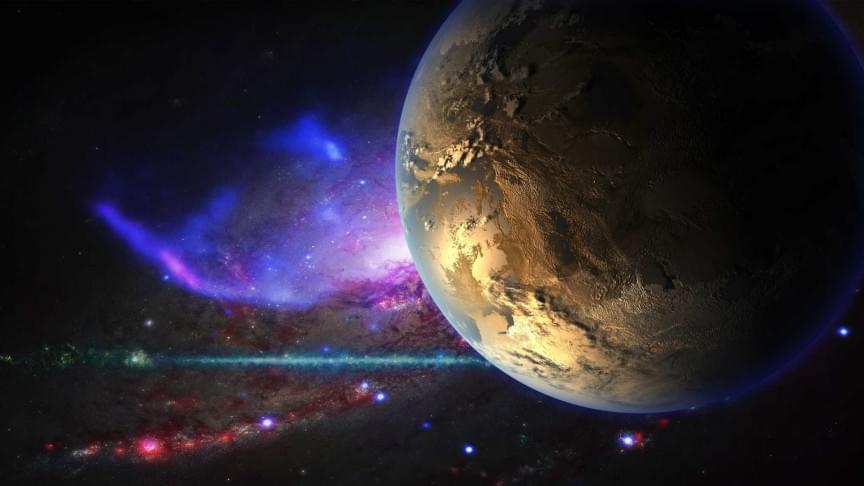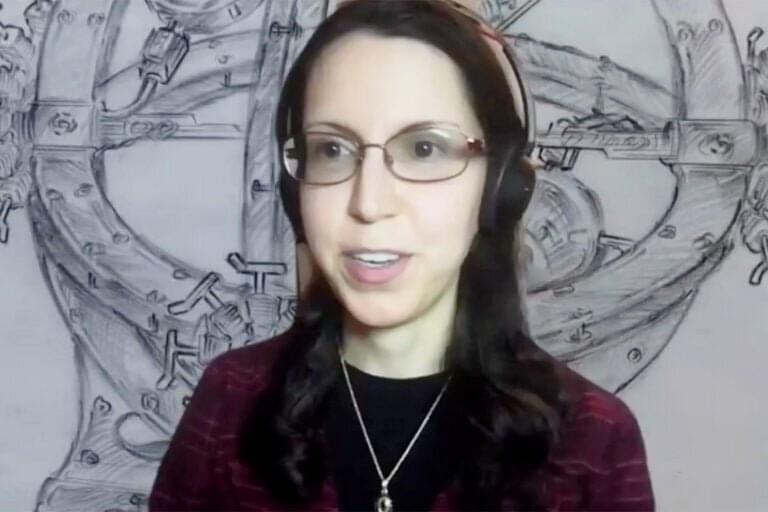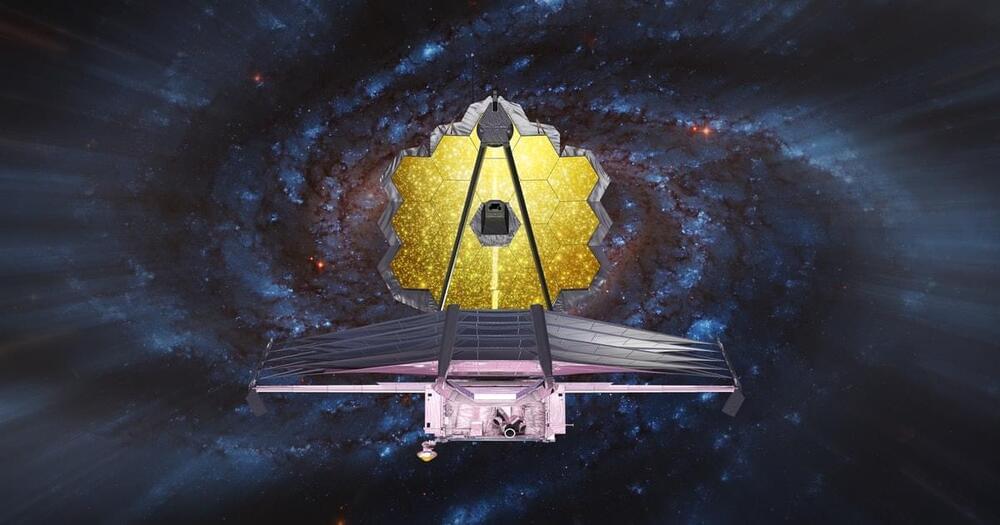Circa 2021
A new study says that we could terraform Mars by creating an artificial magnetic field around it to prevent harmful solar radiation.

A look at advanced means of altering or controlling the planet’s climate and geography, drawing on concepts proposed for terraforming other planets. We look at existing and proposed ideas of controlling the weather, creating artificial islands or mountain ranges, using orbital mirrors and shades, and many other concepts.
Visit our Website: http://www.isaacarthur.net.
Join the Facebook Group: https://www.facebook.com/groups/1583992725237264/
Support the Channel on Patreon: https://www.patreon.com/IsaacArthur.
Visit the sub-reddit: https://www.reddit.com/r/IsaacArthur/
Listen or Download the audio of this episode from Soundcloud: https://soundcloud.com/isaac-arthur-148927746/weather-control.
Cover Art by Jakub Grygier: https://www.artstation.com/artist/jakub_grygier
Sign up for a Curiosity Stream subscription and also get a free Nebula subscription (the streaming platform built by creators) here: https://curiositystream.com/isaacarthur.
We believe Mars may once have had oceans and sky, but lost them from a lack of a magnetosphere. How does this happen, and how can we create a magnetosphere for Mars so we can terraform and live on it?
International Space Development Conference Registration: https://isdc2022.nss.org.
Martian Magnetosphere paper by R.A. Bamford: https://arxiv.org/abs/2111.06887
Visit our Website: http://www.isaacarthur.net.
Support us on Patreon: https://www.patreon.com/IsaacArthur.
Support us on Subscribestar: https://www.subscribestar.com/isaac-arthur.
Facebook Group: https://www.facebook.com/groups/1583992725237264/
Reddit: https://www.reddit.com/r/IsaacArthur/
Twitter: https://twitter.com/Isaac_A_Arthur on Twitter and RT our future content.
SFIA Discord Server: https://discord.gg/53GAShE
Listen or Download the audio of this episode from Soundcloud: Episode’s Audio-only version: https://soundcloud.com/isaac-arthur-148927746/making-a-magnetosphere-for-mars.
Episode’s Narration-only version: https://soundcloud.com/isaac-arthur-148927746/making-a-magne…ation-only.
Credits:
Making a Magnetosphere for Mars.
Science & Futurism with Isaac Arthur.
Episode 342, May 12, 2022
Written, Produced & Narrated by Isaac Arthur.
Editors:
David McFarlane.
Cover Art:
Good telescope that I’ve used to learn the basics: https://amzn.to/35r1jAk.
Get a Wonderful Person shirt: https://teespring.com/stores/whatdamath.
Alternatively, PayPal donations can be sent here: http://paypal.me/whatdamath.
Hello and welcome! My name is Anton and in this video, we will talk about new interesting proposition on how to terraform Venus using floating continents.
Links:
https://en.wikipedia.org/wiki/Terraforming_of_Venus.
https://arxiv.org/pdf/2203.06722.pdf.
#venus #terraforming #nasa.
Support this channel on Patreon to help me make this a full time job:
https://www.patreon.com/whatdamath.
Bitcoin/Ethereum to spare? Donate them here to help this channel grow!
bc1qnkl3nk0zt7w0xzrgur9pnkcduj7a3xxllcn7d4
or ETH: 0x60f088B10b03115405d313f964BeA93eF0Bd3DbF
Space Engine is available for free here: http://spaceengine.org.
Enjoy and please subscribe.
Twitter: https://twitter.com/WhatDaMath.

What do quantum computers have to do with smog-filled London streets, flying submarines, waistcoats, petticoats, Sherlock Holmesian mysteries, and brass goggles?
A whole lot, according to Nicole Yunger Halpern. Last week, the theoretical physicist joined Jacob Barandes, co-director of graduate studies for physics, to discuss her new book, “Quantum Steampunk: The Physics of Yesterday’s Tomorrow.” In it, Yunger Halpern dissects a new branch of science—quantum thermodynamics, or quantum steampunk as she calls it—by fusing steampunk fiction with nonfiction and Victorian-era thermodynamics (the heat and energy that gets steam engines pumping) with quantum physics. Yunger Halpern presents a whimsical lens through which readers can watch a “scientific revolution that’s happening in real time,” Barandes said, exploring mysteries even Holmes couldn’t hope to solve, such as why time flows in only one direction.
“This fusion of old and new creates a wonderful sense of nostalgia and adventure, romance and exploration,” Yunger Halpern said during a virtual Harvard Science Book Talk presented by the University’s Division of Science, Cabot Science Library, and Harvard Book Store. In steampunk, she continued, “fans dress up in costumes full of top hats and goggles and gears and gather at conventions. What they dream, I have the immense privilege of having the opportunity to live.”

The first galaxies in the universe are a mystery to us — but that could soon change.
The cosmos has come a long way (pun intended). But the most fantastic story of all time isn’t fully understood — especially the early chapters, ‘written’ in history during the first two to three hundred million years of the universe’s 13.8 billion-year existence.
The James Webb Space Telescope could be the key. The observatory can look about three times as far back in time than the iconic Hubble. The Webb will detect infrared wavelengths long enough to pierce through the dense smog of all the light and dust that sits between Earth and the furthest galactic posts, revealing information about the ancient universe where these wavelengths began their journey through space billions of years ago.
Although not quite yet ready to collect data, the Webb Telescope promises a level of perception made possible by its four instruments. These instruments can operate at the same time to siphon observations of objects like galaxies — maximizing the efficiency of the telescope.

SHANGHAI, March 22 (Reuters) — Not a single country managed to meet the World Health Organization’s (WHO) air quality standard in 2021, a survey of pollution data in 6,475 cities showed on Tuesday, and smog even rebounded in some regions after a COVID-related dip.
The WHO recommends that average annual readings of small and hazardous airborne particles known as PM2.5 should be no more than 5 micrograms per cubic metre after changing its guidelines last year, saying that even low concentrations caused significant health risks.
But only 3.4% of the surveyed cities met the standard in 2021, according to data complied by IQAir, a Swiss pollution technology company that monitors air quality. As many as 93 cities saw PM2.5 levels at 10 times the recommended level.

Billionaire Elon Musk has long been vocal about his ambitions for colonizing Mars – here’s everything we know about his plan.
Musk founded SpaceX in 2002 and since then has constantly reiterated one of his biggest goals is to help make humankind a multi-planetary species.
In order to achieve this otherworldly feat, the world’s richest man (at the time of publishing) turned his attention to the red planet, located approximately 33.9 million miles away from Earth.

Ben RayfieldWeather control tech exists, to some extent. EMP weapons exist. If there was a 477 mile long lightning, it was probably either due to the sun or is a weapon or a terraforming experiment.
Quinn SenaAuthor.
GIPHY
Genevieve Klien shared a link.
According to a series of etherscan transactions, an attacker has exploited Wormhole, a bridge between the Ethereum and Solana blockchains, for close to $323 million in ETH.
Wormhole is a bridging protocol that enables assets to move across various blockchain protocols. When a user sends assets from one chain to another, the bridge locks the assets and mints a wrapped version of the funds on the destination chain.
Learnings For Regenerative Morphogenesis, Astro-Biology And The Evolution Of Minds — Dr. Michael Levin, Tufts University, and Dr. Josh Bongard, University of Vermont.
Xenobots are living micro-robots, built from cells, designed and programmed by a computer (an evolutionary algorithm) and have been demonstrated to date in the laboratory to move towards a target, pick up a payload, heal themselves after being cut, and reproduce via a process called kinematic self-replication.
In addition to all of their future potential that has been mentioned in the press, including Xenobot applications for cleaning up radioactive wastes, collecting micro-plastics in the oceans, and even helping terraform planets, Xenobot research offers a completely new tool kit to help increase our understanding of how complex tissues/organs/body segments are cooperatively formed during the process of morphogenesis, how minds develop, and even offers glimpses of possibilities of what novel life forms we may encounter one day in the cosmos.
This cutting edge Xenobot research has been conducted by an interdisciplinary team composed of scientists from University of Vermont, Tufts University, and Harvard, and our show is honored to be joined by two members of this team today.
Dr. Josh Bongard, Ph.D. (https://www.uvm.edu/cems/cs/profiles/josh_bongard), is Professor, Morphology, Evolution & Cognition Laboratory, Department of Computer Science, College of Engineering and Mathematical Sciences, University of Vermont.